Q. What is a CPR?
From 1 July 2013 a construction product will need to be CE marked and accompanied by a declaration of performance if it is covered by
• a harmonised European product standard (hEN) or
• a European Technical Assessment (ETAG) or
• a Common Understanding of Assessment Procedure (CUAP)
The scope of the CPR and associated CE marking is limited to product characteristics for which there are national provisions relating to the products’ use under the following headings:
1. Mechanical resistance and stability
2. Safety in case of fire
3. Hygiene, health and the environment
4. Safety and accessibility in use
5. Protection against noise
6. Energy economy and heat retention
7. Sustainable use of natural resources
National provisions relating to these issues vary between EU Member States and so, although a product may be CE marked, it may not be suitable for particular applications or for use within some Member States.
Within the UK, a national addendum to EN standards take precedent.
This is a legal requirement and applies to manufacturers, importers, or distributors of affected construction products.
Manufacturers will need to be aware of the relevant technical specifications and regulatory requirements applicable to their construction products.
Q. What are manufacturers’ responsibilities for CE marking of products?
- Draw up declaration of performance
- Create a technical construction file
- Affix the CE Marking
- Keep documentation for 10 years
- Ensure series production maintains the declared performance
- Provide instructions and safety information on products
- Take corrective action where products do not conform to the Declaration of Performance (DoP)
Q. Does CPR apply to signs?
At present, there are relevant harmonised product standards (hEN) for
- road traffic signs (EN12899-1:2007)
- steel/aluminium structures (EN1090-1:2009 + A1:2011)
- additionally ETAG for metal anchors in concrete (ETAG001-1:2006) and CUAP for cast in anchor bolts (CUAP ref-20)
Q. What does road traffic sign regulations have to do with BSGA Members?
EN12899-1:2007 case law has established that any road to which the public has access, including roads in car parks, is a road for the purposes of the RTRA. This will include amongst others supermarket car parks and motorway service areas. Anywhere a member of the public can legally drive their car and that place requires traffic signing then those signs will need to be manufactured in accordance with CE markings as from July 2013.
Q. How will EN1090-1 apply to BSGA Members?
This is still being finalised. The implementation date is now set for 2014 however, by virtue of Building Regulations, much of EN1090-1 is already a requirement.
Whilst there is no direct legal binding to the use of British Standards or Eurocodes, they are a valid code of practice to use when carrying out designs required to comply with building regulations. For convenience and practicality, the Approved Documents to the Building Regulations lists standards given as “deemed to satisfy” status. For example, Building Regulations refer to wind loads to be calculated to EN1991-1-4 (which superseded BS6399). This European standard forms part of Eurocode 1 and hence EN1090-1.
Structural steel or aluminium components are safety critical. When CE marking is ratified for EN1090-1 then manufacturers require their Factory Production Control system (FPC) to be independently assessed and certified by a national notified body such as BRE and BMTRADA.
Q. What other product groups could apply to BSGA Members?
Some Members provide additional manufacturing services to their clients. For example cladding has become an added revenue stream using aluminium composite material (ACM). EN14782 and EN14783 may apply dependent upon the application.
As previously indicated there is a CUAP for cast in anchor bolts. Root cages have been traditionally manufactured by sign companies.
Conclusion
There’s still details missing from the standard/legislation. The hENs are continually developing and need updating to include CPR data.
Format of European Assessment Documents (EAD) and European Technical Assessments (ETA) are still being agreed.
Many of the products that are already CE marked will lead the way into CPR.
By July 2013, the UK will need to:
- amend the Building Regulations guidance on materials & workmanship
- repeal and replace the UK Construction Products Directives
- create a UK Product Contact Point
- set a UK Surveillance Authority
- create UK Notified Body (NB) & Technical Assessment Body (TAB) guidelines
As you can see that there is still a fair bit of work and advice to come through. In the meantime, we suggest that you consider taking on board these practices and regulations now so that you will not be caught out when the time comes. By raising your own standards now it should place you well for the future.
Construction Product Regulations definitions and responsibilities
This information is accredited to the Association for Road Traffic Safety and Management (ARTSM) and is freely available from them on their website www.artsm.org.uk
Placing on the market
CPR 2.16 “Making available on the market” means any supply of a construction product for distribution or use on the Union market in the course of a commercial activity, whether in return for payment or free of charge.
CPR 2.17 “Placing on the market” means the first making available of a construction product on the Union Market.
Manufacturer – The definition of manufacturer for the purposes of the CPR is somewhat different from common usage. A manufacturer is the person (natural or legal) who is responsible for designing and/or manufacturing a product with a view to placing it on the market on his own behalf. The manufacturer has an obligation to ensure that a product intended to be placed on the market is designed and manufactured in accordance with the provisions of the CPR. The manufacturer may use finished products, ready-made parts or components, or may subcontract these tasks. However he must always retain overall control and have the necessary competence to take responsibility for the product. The manufacturer does not have to be based in the EC.
Producer – A producer is a manufacturer of a finished product or component part of a finished product, a producer of any raw material, or any person who presents himself as a manufacturer (for example by fixing a trade mark). It includes a designer who subcontracts the manufacture of a product but places the product on the market under his own name. Importers placing products on the Community market from third countries are all considered to be producers according to the Directive on product liability. The CPR states that the producer is responsible for the conformity of the product at the time it is placed on the European Economic Area (EEA) market (i.e. the initial action of making a product available on the EEA market, with a view to its distribution and/or use within the EEA).
Distributor – Provisions regarding distribution are in general not included in the CPR. A distributor is to be considered as any person in the supply chain who takes subsequent commercial actions after the product has been placed on the Community market. The distributor shall act with due care in order not to place clearly non-compliant products on the Community market. He shall be capable of demonstrating this to the national surveillance authority.
Authorised Representative – The manufacturer may appoint a person to act on his behalf as an authorised representative, which for the purposes of the CPR must be established within the EC. The authorised representative is explicitly designated by the manufacturer (in writing) and he may be addressed by the authorities of the member states, instead of the manufacturer, with regard to the latter’s obligations under CPR. The manufacturer remains generally responsible for the actions carried by an authorised representative on his behalf. The authorised representative cannot modify a product on his own initiative in order to bring it into line with the CPR. The authorised representative can, at the same time, act as a subcontractor to the manufacturer on the condition that the manufacturer retains responsibility for the design, manufacture and compliance with the CPR. The authorised representative can at the same time act as an importer if his responsibilities are extended accordingly.




 European Sign Federation
European Sign Federation